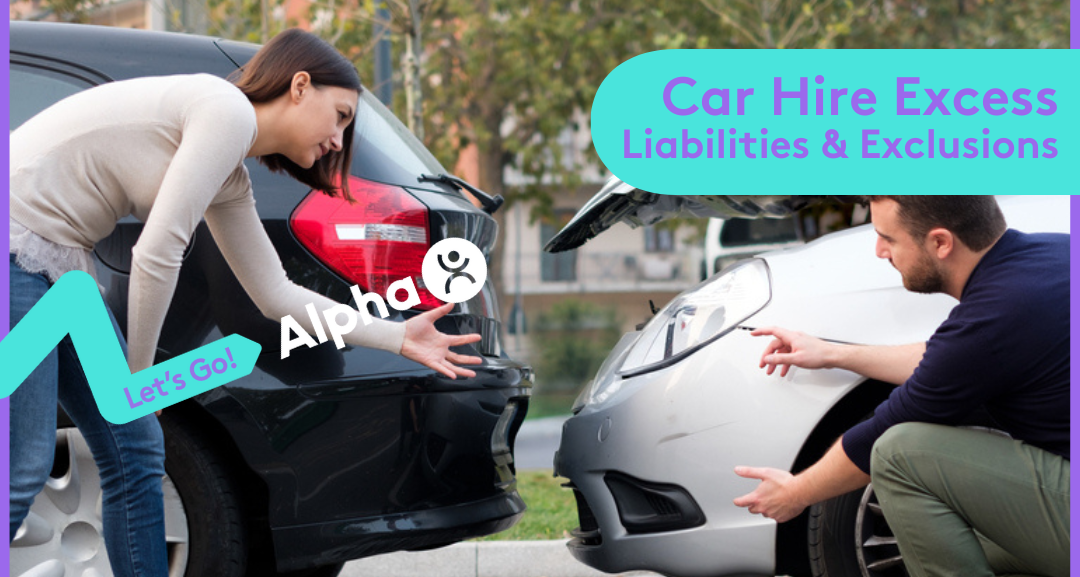Let’s say you rent a car, and you’re off cruising through the streets, having an awesome adventure with a few good friends, when you accidentally back up to a large trash bin while parking. You fix your park, get out of the vehicle, and check the boot and rear for damages. It’s just a teensy scratch — no big deal, right? Not exactly.
I hate to break it to you, but you might just end up losing a couple of hundreds or, worse, thousands on your debit or credit card if you ever return your car rental with even the tiniest damage.
If you read the terms and conditions, your standard rental car insurance excess isn’t just put on hold when you rent a car — it’s taken in case of any damage to the rental vehicle. The good news is that you do have options in limiting the costs. But before choosing the best car hire excess cover for you, you first need to know what exactly it’s about:
Insurance for Car Hire: Your Liability
Typically, reading through the terms and conditions and a conversation with the booking agent will help you to figure out what you’ll be liable for and what the exclusions are during the booking process of your car hire. Unfortunately, some providers seem to make it their mission to make the terms and conditions as incomprehensible as possible. Couple that with the fact that most people simply tick the “I have read and agree with the Terms & Conditions” box, and you have customers who are none-the-wiser in what they agree to.
To help you understand the big fancy words in the T&Cs, here are the three major excess and car for hire insurance parts you should know:
Third-party insurance: Whichever state or territory you are in, Australia, it is compulsory to register third-party insurance with a car — including rental vehicles. This policy will cover any injuries you may cause to other people but, strangely enough, may not any injuries you may cause to your person (If you are the driver). Before getting insurance, you may also want to ask which covers the driver.
Standard liability or excess: It’s also known as collision or loss damage waiver, damage liability fee, accident damage excess, or damage recovery fee. This limits your potential liability to a specific amount. This isn’t the best way to go unless your car is a total wreck. While you won’t be charged any additional fees if you stick to this, your liability can range between $2000 to $4000 in the event of an accident.
Excess reduction products: If you want to reduce your liability in the event of a crash without seeking a third-party insurer, car hire companies often have excess reduction options. These can be as low as $9 per day and can significantly lower your liabilities. E.g., standard excess = $3300; excess from protection package = $250. Just be sure to read through the T&Cs to find out exactly what these packages cover.
Rental Car Liability Insurance Exclusions and Breaches
While some car hire companies will have packages that will reduce your excess to zero, you may not have waived all liabilities due to exclusions to the cover. Some of these include:
- Administrative fees on top of the standard excess in case of an accident.
- Full liability for damages (even beyond the excess) in the event of a breach of contract.
- Loss of income to the car rental company while the vehicle is being repaired in case of a breach of contract.
- Liability for single-vehicle accidents may not always be reduced to $0.
Some common breaches and exclusions are:
- Windscreens, tyres, wheels, glass, roof, and/or underbody damage.
- Disobeying road rules or any other law
- Driving outside of the town/city/state limits (see Terms & Conditions)
- Driving on unsealed roads
- Driving under the influence
- Hail, storm, cyclone, flood, or fire
- Having an unauthorised person drive the car
- Using the wrong fuel type
Car Rental Excess Insurance Reduction
At Alpha Car Hire, we offer optional excess reduction products for all our customers. You can take advantage of reduced excess and even protection against windscreen and tyre damage for a minimal daily premium on top of your daily rates.
You can choose your type of protection when on our online booking portal, or, alternatively, you can speak with one of our customer service representatives to discuss your options.
Editor’s Note: This post was originally published in 2018 and has been updated for freshness, accuracy and comprehensiveness.



Comments are closed.